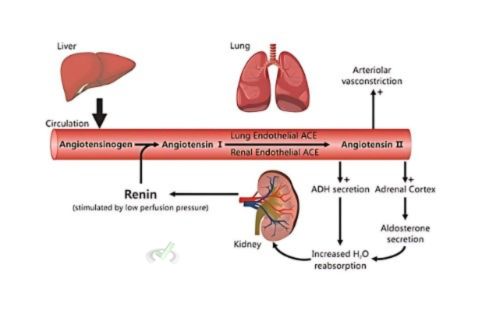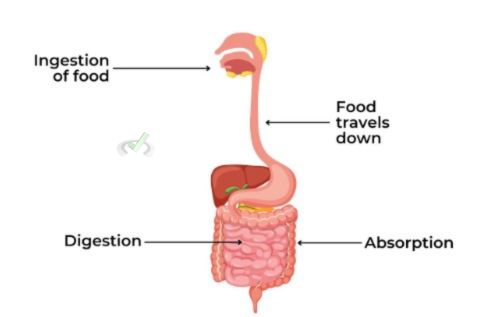Think of a bustling city where transportation networks keep everything moving smoothly. Fluid dynamics play a similar role in our bodies, ensuring that blood, air, and other vital fluids flow where they are needed most. Understanding these processes is key to grasping how our bodies function, from the pumping of the heart to the breathing of our lungs.
I. Introduction to Fluid Dynamics
The study of fluid dynamics explores how liquids and gases move. It’s a branch of physics that helps us understand how substances like water and air behave when they are in motion. Fluid dynamics is important because it applies to many areas, from engineering to natural processes.
In physiology, fluid dynamics is crucial. It helps us understand how blood flows through our veins and arteries, how we breathe, and how other fluids move in our bodies. By studying fluid dynamics, we can understand the workings of the heart, lungs, and other systems.
Fluid dynamics involves basic principles like pressure, flow rate, and resistance. Pressure is the force exerted by the fluid per unit area.
Flow rate is the volume of fluid that moves in a certain amount of time. Resistance is what opposes the flow of fluid. These principles help explain how fluids move in different situations.
II. Fluid Dynamics in the Circulatory System
The circulatory system is a network of blood vessels that carry blood throughout the body. Blood flow is a key concept in fluid dynamics, and understanding it is essential for comprehending how our cardiovascular system works.
Blood Flow and Blood Vessels
Blood vessels include arteries, veins, and capillaries. Arteries carry blood away from the heart. Veins bring it back. Capillaries connect the arteries and veins.
Blood Pressure and Its Regulation
The pressure of blood against the walls of blood vessels is known as blood pressure. It’s important for maintaining blood flow.
The heart acts as a pump. It has four chambers: two atria and two ventricles.
The atria receive blood, while the ventricles pump it out. The left ventricle pumps blood to the body, and the right ventricle pumps blood back to the lungs. The heart’s pumping action creates a pressure gradient, driving blood flow.
Moreover, the Renin-Angiotensin-Aldosterone System (RAAS) regulates blood pressure. This system involves several steps:
- Renin Release: When blood pressure drops, the kidneys release renin, an enzyme, into the bloodstream.
- Angiotensin Formation: Renin converts a protein in the blood called angiotensinogen into angiotensin I. An enzyme found in the lungs then converts angiotensin I into angiotensin II.
- Effects of Angiotensin II: Angiotensin II is a powerful vasoconstrictor that narrows blood vessels, increasing blood pressure. Also, it stimulates the release of aldosterone from the adrenal glands.
- Aldosterone's Role: Aldosterone causes the kidneys to retain sodium and water, increasing blood volume and, consequently, blood pressure.
The RAAS is a vital feedback loop maintaining the body’s blood pressure and fluid balance. Blood pressure ensures that all tissues receive enough oxygen and nutrients. Too high or too low blood pressure can cause health problems, so it's important to maintain it within a normal range.

III. Respiratory System and Fluid Dynamics
The respiratory system involves the movement of air in and out of the lungs. This section covers how airflow is governed by fluid dynamics principles and the mechanics of breathing.
Airflow in the Lungs
The respiratory system involves the movement of air in and out of the lungs. This process is called ventilation. Airflow is governed by fluid dynamics principles, similar to blood flow.
Mechanics of Breathing
Breathing involves the diaphragm and intercostal muscles. When you inhale, the diaphragm contracts, creating a negative pressure in the lungs. This negative pressure draws air in. When you exhale, the diaphragm relaxes, pushing air out.
In the lungs, gas exchange occurs. Oxygen from the air moves into the blood, then carbon dioxide from the blood moves into the air.
This exchange happens in the alveoli, tiny air sacs surrounded by capillaries. The alveoli's large surface area and thin walls make gas exchange efficient.

IV. Other Physiological Applications
Fluid dynamics is also important in other bodily systems. This section explores how fluid dynamics is involved in lymphatic, digestive, and cerebrospinal fluid dynamics.
Lymphatic System
The lymphatic system is responsible in maintaining the fluid balance in the body and supports the immune system. It collects excess fluid from tissues, then returns it to the bloodstream.
This fluid, known as lymph. The lymph travels through lymphatic vessels and passes through lymph nodes, which filter out pathogens and other harmful substances.
By understanding fluid dynamics, we can understand how lymph moves against gravity, driven by muscle contractions and valves that prevent backflow. This process ensures that the body's tissues remain hydrated and free from infection.
Digestive System
In the digestive system, various fluids play critical roles in breaking down food and absorbing nutrients. Saliva, produced by salivary glands, begins the digestive process. It moistens food and breaks down carbohydrates with enzymes.
As food matter travels down the esophagus to the stomach, digestive juices containing hydrochloric acid and enzymes further break it down. In the small intestine, bile produced by the liver emulsifies fats. This makes them easier to digest and absorb.
Fluid dynamics explains how these fluids move through the digestive tract, mix with food, and facilitate nutrient absorption. The process ensures that the body receives the essential components it needs for energy and growth.

Cerebrospinal Fluid Dynamics
Cerebrospinal fluid (CSF) surrounds the brain and spinal cord. It provides crucial protection and nourishment. CSF acts as a cushion, absorbing shocks and protecting the brain from injury. The CSF also removes waste products from the brain and delivers nutrients.
The production, circulation, and absorption of CSF are governed by fluid dynamics principles. CSF is produced in the brain's ventricles and flows through channels and spaces before being absorbed into the bloodstream. Understanding how CSF moves helps medical professionals diagnose and treat conditions like hydrocephalus, where excess CSF accumulates and increases pressure on the brain.
VI. Wrap-Up and Key Terms
Understanding fluid dynamics in physiology is crucial for comprehending how our bodies function. It helps explain the movement of blood, air, and other fluids in the body.
Key Terms
- Fluid Dynamics: The study of liquid and gas movement.
- Pressure: Force exerted by the fluid per unit area.
- Flow Rate: Volume of fluid that moves in a certain amount of time.
- Resistance: Opposition to the flow of fluid.
- Circulatory System: Network of blood vessels carrying blood throughout the body.
- Blood Pressure: Force that blood exerts on the walls of blood vessels.
- Ventilation: Movement of air in and out of the lungs.
- Gas Exchange: Transfer between oxygen and carbon dioxide between the lungs and blood.
- Alveoli: Tiny air sacs located in the lungs where gas exchange occurs.
VII. Practical Test
Understanding fluid dynamics in physiology can be tested through practical questions. Here are two multiple-choice questions to test your understanding.
Sample Practice Question 1
Which of the following best describes the role of the left ventricle?
A. Receives blood from the body
B. Pumps blood to the lungs
C. Pumps blood to the body
D. Receives blood from the lungs
Ans. C
The left ventricle pumps oxygenated blood from the heart to the rest of the body.
Sample Practice Question 2
What happens during inhalation?
A. The diaphragm relaxes, and air is pushed out of the lungs
B. The diaphragm contracts, creating negative pressure in the lungs
C. The intercostal muscles relax, then air is pushed out of the lungs
D. The diaphragm contracts, creating positive pressure in the lungs
Ans. B
The negative pressure draws air into the lungs.







 To help you achieve your goal MCAT score, we take turns hosting these
To help you achieve your goal MCAT score, we take turns hosting these 





















 reviews on TrustPilot
reviews on TrustPilot